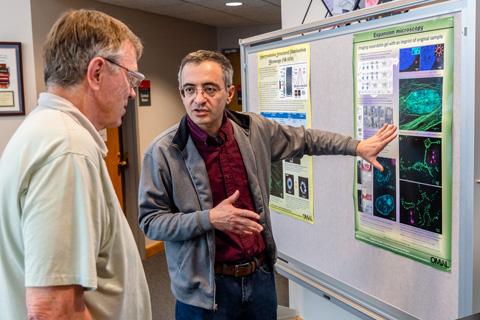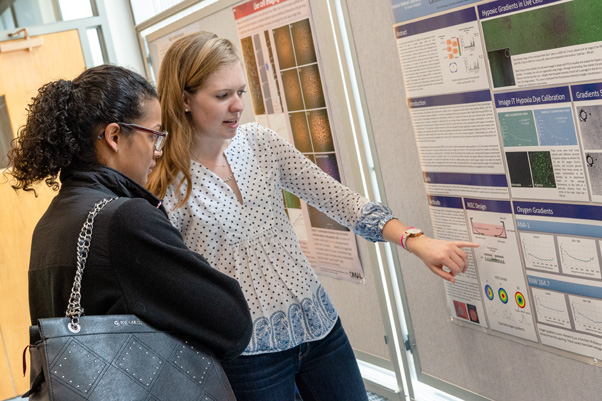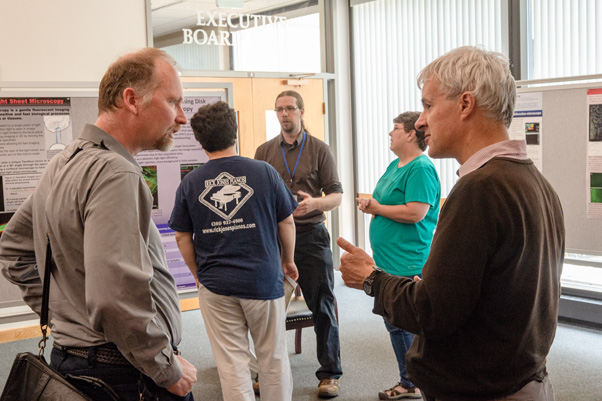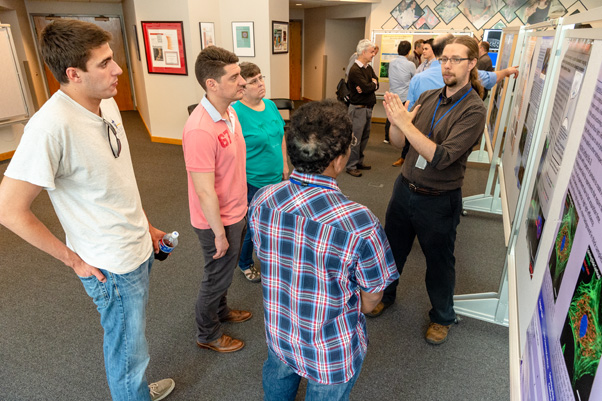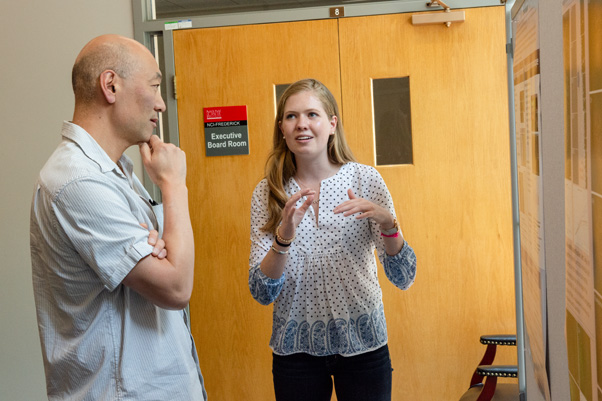The Optical Microscopy and Analysis Laboratory (OMAL) recently held an open house in Building 549 that highlighted numerous projects and informed passersby about the services the group provides.
The goal was to introduce OMAL to NCI at Frederick and Frederick National Laboratory scientists who were unfamiliar with the group or who had not been in contact for some time. To that end, the event was a resounding success, as the OMAL hosts were continuously engaged in conversation and met many new people.
Seventeen posters spread around the lobby’s perimeter highlighted OMAL’s wide-ranging technologies—including fluorescence microscopy, live cell imaging, computational analysis of images, and much more.
“The two most popular technologies both facilitate observation of cellular and molecular details well below what is achievable by standard microscopy,” said Stephen Lockett, principal scientist and director of OMAL, Cancer Research Technology Directorate.
Atomic force microscopy, presented by Will Heinz, images single biomolecules or molecular complexes attached to a substrate at a spatial resolution of approximately one nanometer or less. Moreover, samples can be seen in their natural, hydrated state, and the dynamics of the sample can be measured by sequential image acquisition.
Tissue expansion microscopy, presented by Valentin Magidson, was also a big hit with the visitors.
“Valentin brought a computer to the open house to display 3D images of his accomplishments in expansion,” said Lockett. “It is truly remarkable that cells can be inflated to four or more times their natural linear size without falling apart, thus enabling molecular-level details to be observed that are well below the optical diffraction limit if imaged without expansion.”
According to Lockett, face-to-face, one-on-one conversations remain by far the most effective way to communicate science and develop possibilities for collaboration. Anyone interested in OMAL’s services should contact Lockett, Heinz, Magidson, David Scheiblin, or Kim Peifley.


